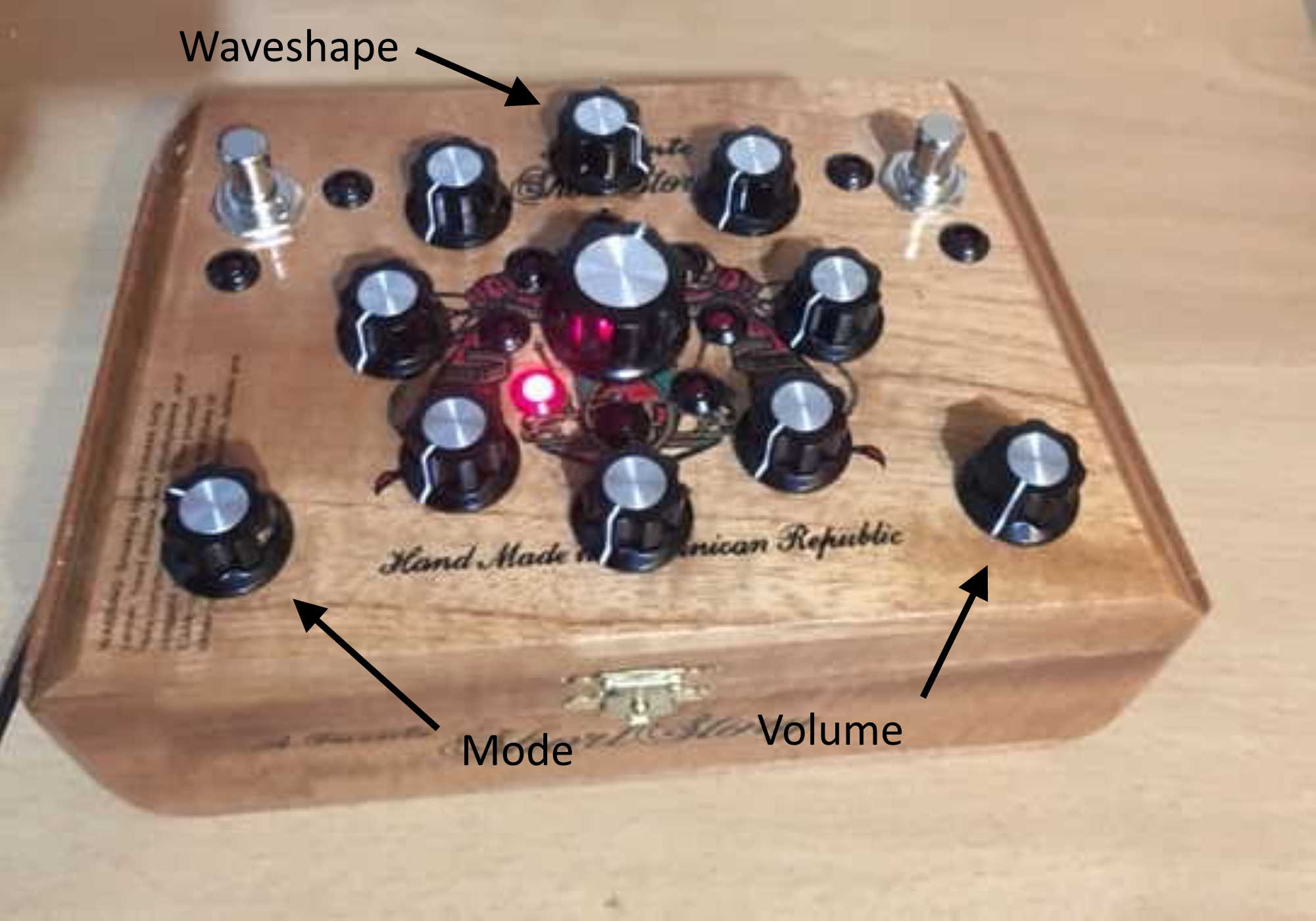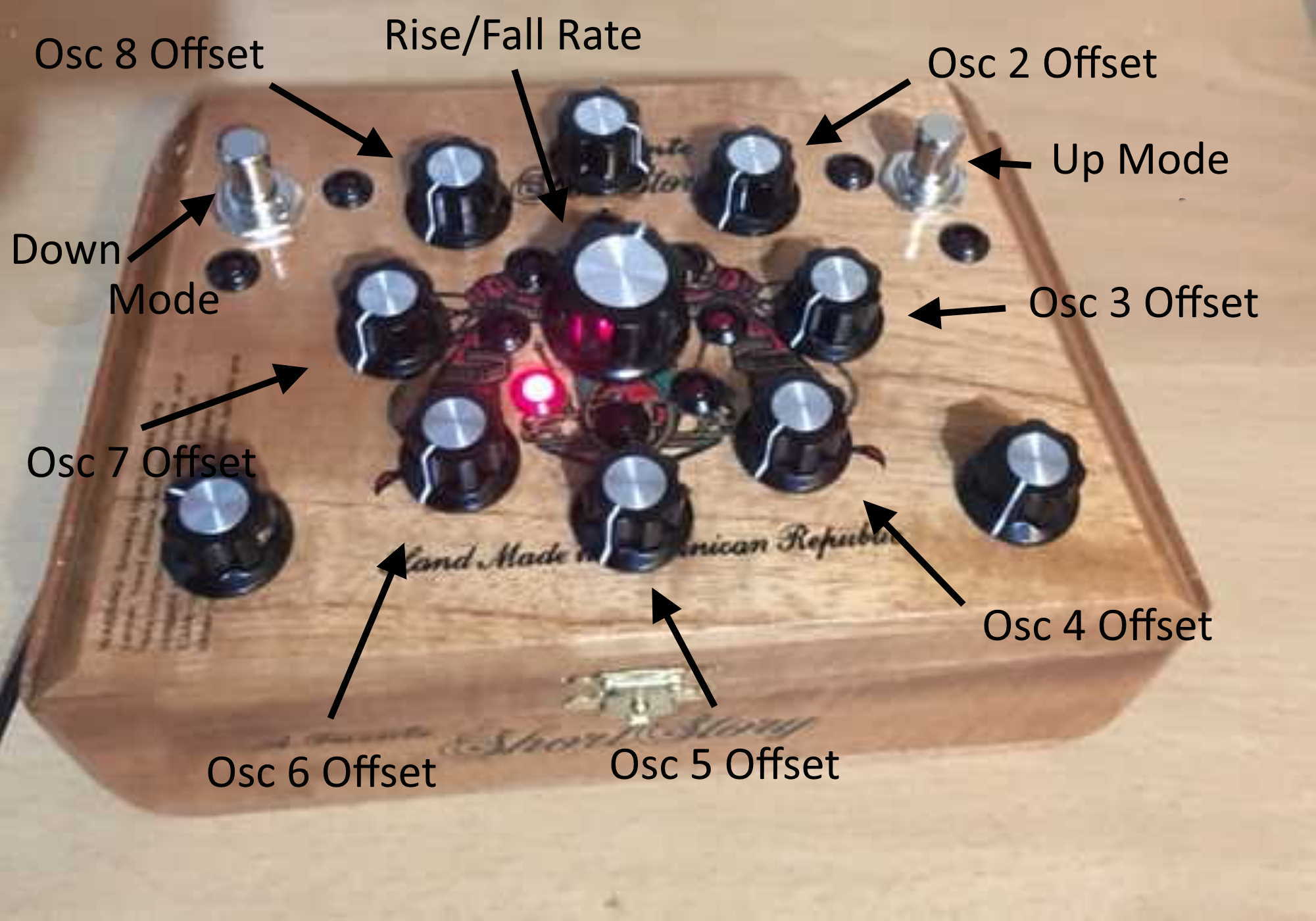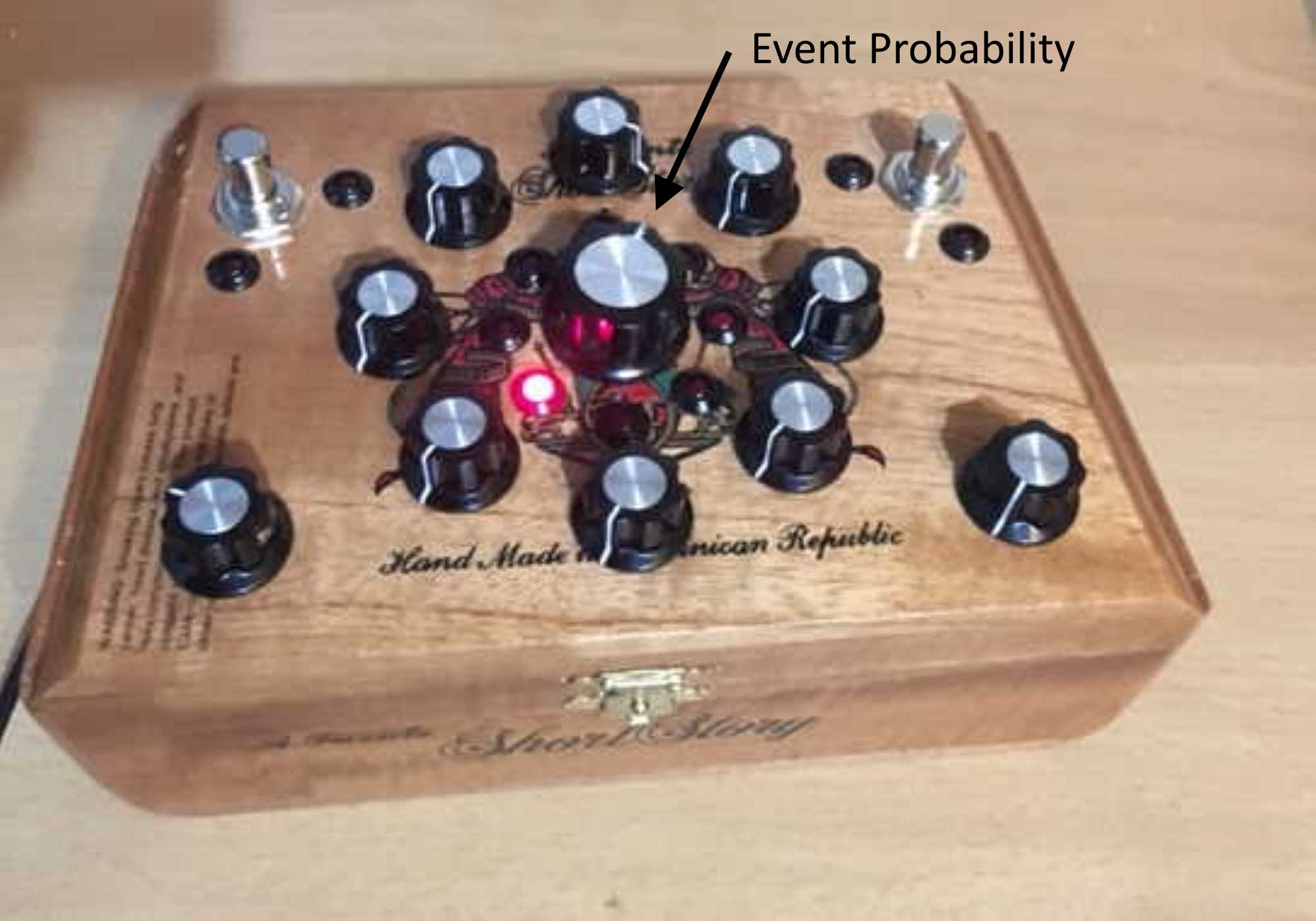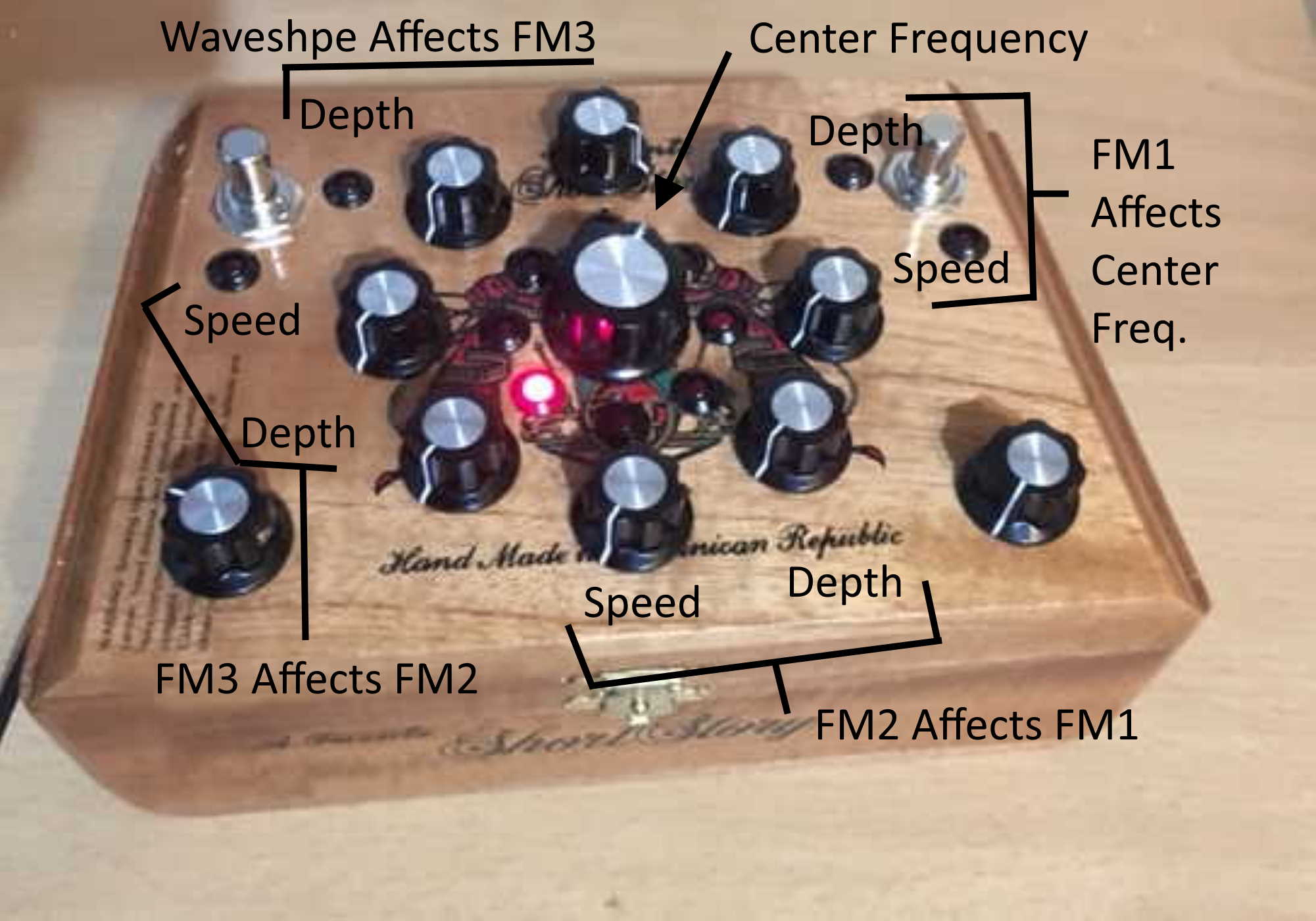NOTE: Although the unit can run on a fresh battery for about 8 hours, it is always best to use the provided power adapter (9VDC sleeve, center pin ground). Make sure the audio cable is fully inserted (two clicks). The Short Story is an eight voice monophonic unit and will not run on battery if a stereo cable is inserted (so don't do that).
Several of the knobs have multiple functions but there are three knobs that always have the same function as shown below:


The Volume knob is self-explanatory. When the Waveshape knob is fully counterclockwise, the oscillators output pure sine waves. As the knob is turned clockwise the wave morphs through various sine-of-sine based functions as shown in the video below:
The Mode knob can select one of four modes:
| Fully counterclockwise | Shepard-Risset Glissando Mode |
| 1/3 clockwise | Random Mode (Normal) |
| 2/3 clockwise | Random Mode (Fast Sweep) |
| Fully Clockwise | FM Loop Mode |
Shepard-Risset Glissando Mode:

Turn the Waveform and all of the Oscillator Offset knobs fully counterclockwise. Set the Rise/Fall Rate knob slightly above center. Pressing and releasing the Up Mode and Down Mode buttons simultaneously will evenly space the eight oscillators across the audio spectrum. This is the "normal" Shepard-Risset Glissando setting. Turning the Rise/Fall Rate clockwise determines how quickly the tones rise. Turning the Rise/Fall Rate below center determines how quickly the tones fall. Tones that go beyond the audio spectrum re-emerge at the other end of the spectrum.
Turning any of the Oscillator Offset knobs will increase the rise rate of that particular oscillator relative to Oscillator 1.
Pressing the Down Mode button once will illuminate the lower Down Mode LED and place the unit into "Forever Down" mode. Any downward travelling oscillator that goes below the audible range will not reset to the high end of the audio spectrum but will continue to slow down to fractions of a hertz and beyond. Pressing the Down mode a second time will illuminate the upper LED and place the unit into "Hold Down" mode. Any downward travelling oscillator that reaches the low end of audio spectrum will not reset to the high end but will instead hover around the low frequencies. In either "Down" mode the oscillators can be brought back into the audio range by turning the Rise/Fall rate higher than center, although if an oscillator goes "Forever Down" for too long it will reach the point of no return. Pressing the Down Mode button a third time will turn off the Down Mode LEDs and resume the oscillators to their normal wraparound behavior.
Pressing the Up Mode button has the same effect on rising frequencies as the Down Mode does on falling frequencies (a "Forever Up" mode and a "Hold Up" mode), but with an added artifact. Any frequency going above the Nyquist frequency (about 31kHz) will generate "reflection" frequencies in the audio band which will sound like descending frequencies.
Using any of the "Forever" or "Hold" modes to get all the oscillators at or beyond the frequency boundaries and then bringing them all back to the audible range using the Rise/Fall rate knob is a quick way to get all eight oscillators "bunched" together to good effect. This is assuming the oscillator offsets are all set to off (counterclockwise).
Random Modes:

In either of the Random modes, the large center knob becomes a Probability setting. Turning the knob counterclockwise means that it is very unlikely that an "event" will occur. All the way clockwise means "events" are extremely likely to occur. An "event" means that any of the eight oscillators can be triggered to sweep randomly up or down at a random speed (the LEDs show which oscillator is triggered at any given time). In normal random mode, the sweep rates of the oscillator span the range of what would normally be adjustable in Shepard-Risset mode. In Fast Random mode, the sweep rates are much higher than what could be attained by the Rate knob. Turning the Mode knob back and forth between the two Random modes allows some oscillators to be sweeping normally while others are sweeping very quickly.
FM Loop Mode:

At times this mode can be even more unpredictable than the Random modes. The main oscillator is frequency modulated by an oscillator that is frequency modulated by second oscillator that is frequency modulated by a third oscillator which is itself modulated by the original oscillator, making a chaotic loop. The initial state of the loop is dependent upon what is happening when the FM Loop mode is engaged.
That's all I have to say for now except All praise and glory to Jesus Christ our Lord and Savior. Enjoy (or not)!!
